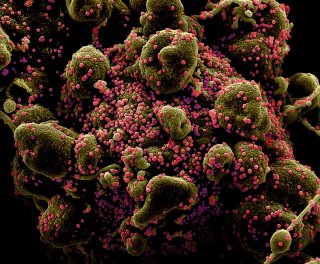What Was SARS, and Why Did it Not Kill Like Coronavirus?
Analysis of the COVID-19 coronavirus, as it continues to kill people and cause economic shutdowns around the world, has often looked back on other pandemics of the past. And one of those was SARS, which was caused by a very similar virus, sharing up to 70 percent of the same DNA. What exactly is SARS?
Analysis of the COVID-19 coronavirus, as it continues to kill people and cause economic shutdowns around the world, has often looked back on other pandemics of the past. And one of those was SARS, which was caused by a very similar virus, sharing up to 70 percent of the same DNA.
The two are so similar, in fact, that per Healthline, the original SARS virus was known as SARS-CoV, while COVID-19 is known as SARS-CoV-2. Both originated in China and likely came from bats. The symptoms were similar as well, including coughing, fatigue and respiratory problems.
There are, however, several big differences, starting with COVID-19 having killed many more people. In fact, COVID-19's worldwide death toll passed that of SARS more than two months ago, on Feb. 9.
SARS stands for Severe acute respiratory syndrome. Per the National Institute of Health, it was first identified in late 2002, with the first cases emerging in February of 2003.
The SARS virus, per the NIH statistics, caused 8000 people to become sick and for 774 to die worldwide. According to the CDC, only eight Americans were diagnosed with SARS, and none of them died. There were, however, more than 250 cases in Canada, and 43 deaths.
SARS, per Healthline, actually had a higher mortality rate than COVID-19, with an estimated 10 percent of those who contracted it passing away.
The other biggest difference was that COVID-19 appears to transmit much more easily. SARS could not be transmitted by asymptomatic people, but the new coronavirus can.
Another big question often raised is how SARS was contained, and whether there are any lessons from that story about how to defeat COVID-19.
According to the Los Angeles Times, SARS was contained after about eight months, and no new cases have been reported since 2004. This was the case even though no vaccine for SARS was ever completed.
The virus was contained, a scientist told the newspaper, by "traditional public health measures, such as testing, isolating patients and screening people at airports and other places where they might spread the virus."
While those measures may be part of the solution when it comes to overcoming the new coronavirus, it's going to be more difficult, since so many more people have the disease, in so many more places, than was the case with SARS.
Stephen Silver, a technology writer for The National Interest, is a journalist, essayist and film critic, who is also a contributor to Philly Voice, Philadelphia Weekly, the Jewish Telegraphic Agency, Living Life Fearless, Backstage magazine, Broad Street Review and Splice Today. The co-founder of the Philadelphia Film Critics Circle, Stephen lives in suburban Philadelphia with his wife and two sons.

